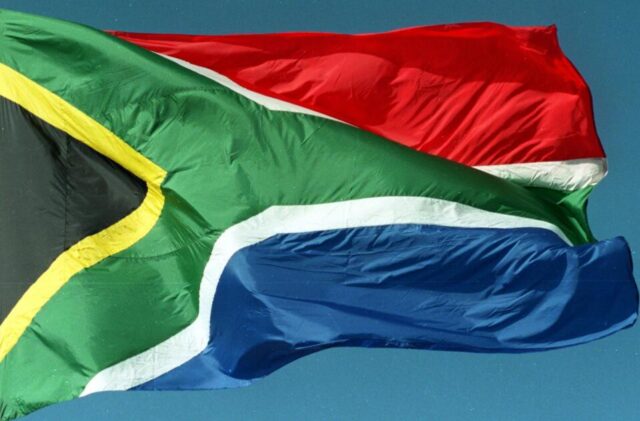The government is embroiled in a legal battle with an Eastern Cape artist over the design of the South African flag.
THE GOVERNMENT is embroiled in a legal battle with an Eastern Cape artist over the design of the South African flag.
This was after Thembani Hastings Mqhayi took the Department of Sport, Arts and Culture to court, claiming the country’s flag had his design and he demanded to be credited.
However, the department denied that the flag was Mqhayi’s brainchild.
The 56-year-old has for years claimed Fredericks Brownell, who was credited for the design of the flag, stole his designs and submitted them as his own.
Brownell, who died in May 2019, was hailed as a hero after having served at the National Archives of South Africa as the State Herald between 1982 and 2002.
Mqhayi, a senior government employee at the Eastern Cape Department of Arts and Culture in Makhanda, claimed that the flag was one of the five different original designs he submitted in early 1994 to the office of the Department of Sport, Arts and Culture.
He said this was after the late former president Nelson Mandela in 1993 made a call that artists and citizens submit designs of the flag of the new and democratic South Africa.
In his affidavit, Mqhayi said he heeded the call and submitted five different original designs.
He said one of his designs was later adopted and used to create the flag.
Mqhayi, however, said he sent the designs through the East London Post Office, and did not keep a copy of any of the designs.
The former Minister of Sport, Arts and Culture, Nathi Mthethwa, was cited as the first respondent, while the State Herald was mentioned as the second respondent in the court application.
“I did not get any confirmation of receipt of my designs from the office of the second respondent after I submitted them in 1994, nor did I hear from them. I was never informed that my designs were rejected, as reported in the media.
“Unfortunately, I also never received any credit for my work and to date the design of the flag has been credited to the then State Herald, the late Fredericks Brownell, who was part of the panel that chose and said to have recommended the chosen design of the new flag to the president,” Mqhayi said.
He said he had on numerous occasions engaged the Department of Sport, Arts and Culture and State Herald in an effort to get answers regarding the process followed and the design that was approved and later developed to create the flag.
“I have not received any direct or reliable feedback, hence the need for this application. I must pause to emphasise that it is my design that was used to develop the flag, and I request the office of the first respondent to provide me with the information, which I requested to enable me to reclaim the intellectual property and credit for my artwork,” Mqhayi said.
Mqhayi also wanted the court to instruct the department to disclose:
- The name and capacity of each individual who made up the Heraldry Committee that chose and approved the design of the flag for recommendation to the president.
- Minutes of all meetings of the committee where designs related to the flag were approved and discussed.
- Names and contact details of all individuals who submitted designs in respect of the creation of the flag.
- The design that was approved by the committee or the second respondent to create the flag.
- The selection process that was followed in approving and rejecting the draft designs for the flag.
- The final recommendation by the committee of the design that was submitted to the president for approval.
“I humbly request the above Honourable Court to compel the office of the first and second respondent to provide me with the information requested and grant me the orders as prayed for on the notice of motion,” he said.
Mqhayi’s spokesperson, Bandile Magibili ,said they are also doing this to help upcoming artists to be treated better and with respect.
However, in its replying affidavit, the Department of Sport, Arts and Culture’s acting director-general, Gerald Ndima, denied that all the allegations in Mqhayi’s affidavit were true and correct.
Ndima said some allegations were based on misconceptions of facts and did not reflect the true facts of the process of how a national flag came into being.
Ndima said the department also denied that the artwork that was used in the creation of the flag was Mqhayi’s brainchild.
He said there was never a Heraldry Committee that was appointed by the Multiparty Council, but a Heraldry Council.
“The mandate of the Heraldry Council was to consider and evaluate, make recommendations to the Multiparty Negotiating Council the designs of the flags that were submitted by firms of professional artists,” said Ndima.
He added that Mandela was not the president of the country in 1993 and did not make a call for the artists and citizens to submit designs of the flag.
“Indeed, the call was made in 1993 for interested people and parties to submit a flag design for a democratic South Africa, but that call was made by the Multiparty Negotiating Council,” Ndima said.
Efforts to get comment from Minister of Sports, Arts and Culture Zizi Kodwa drew a blank.








